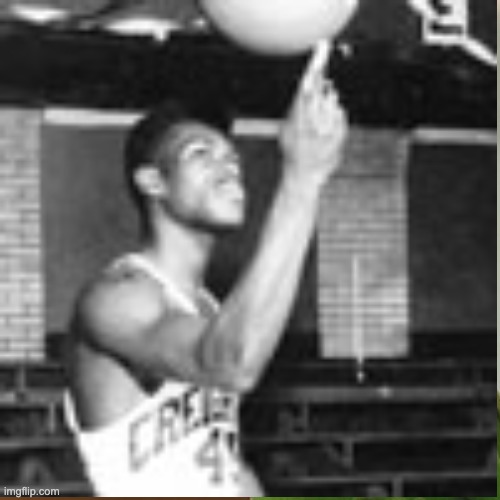Upcoming Season - Plans Being Considered
Re: Upcoming Season - Plans Being Considered
Husky_U wrote:Omaha1 wrote:Plans under consideration
Among the various plans under consideration for the Big East: a 22-team bubble (men’s and women’s programs) in Omaha, Neb.; a split bubble between the eastern and midwestern programs in Hartford, Conn. and Omaha, respectively; perhaps some combination of the two over the course of a season; and possible participation in regional non-conference bubbles. It seems certain that no bubble will last longer than a month; there is no appetite for holing up college athletes for months at a time, like the pros.
Or Uncasville, CT...
Jon Rothstein
@JonRothstein
Sources: In addition to Orlando, Mohegan Sun has emerged as a prime location to host multiple early season college basketball tournaments in a bubble type setting.
10:22 AM · Aug 26, 2020
That place actually makes a lot of sense.
XAVIER
- Xudash
- Posts: 2536
- Joined: Wed Dec 26, 2012 9:25 pm
Re: Upcoming Season - Plans Being Considered
Jon Rothstein
@JonRothstein
Sources: If college basketball begins on 11/25 or 12/4, Mohegan Sun has emerged as a bubble location to host teams in December that were scheduled for the following early season events:
Empire Classic
Gotham Classic
Legends Classic
Hall-of-Fame Tipoff
Hall-of-Fame Invitational
Empire: Nova, Baylor, Michigan, NC St
Gotham: LSU, Cuse
Legends: UConn, ND, USC, Vandy
HOF Tipoff: Minnesota, Marquette, URI, UCF
HOF Invitational: Purdue, WVU, PSU, Florida, GT, Stanford (BC)
Could be a key event in the "Golden Window".
Source: Additional teams could be added.
1:59 PM · Aug 28, 2020
@JonRothstein
Sources: If college basketball begins on 11/25 or 12/4, Mohegan Sun has emerged as a bubble location to host teams in December that were scheduled for the following early season events:
Empire Classic
Gotham Classic
Legends Classic
Hall-of-Fame Tipoff
Hall-of-Fame Invitational
Empire: Nova, Baylor, Michigan, NC St
Gotham: LSU, Cuse
Legends: UConn, ND, USC, Vandy
HOF Tipoff: Minnesota, Marquette, URI, UCF
HOF Invitational: Purdue, WVU, PSU, Florida, GT, Stanford (BC)
Could be a key event in the "Golden Window".
Source: Additional teams could be added.
1:59 PM · Aug 28, 2020
-

Husky_U - Posts: 934
- Joined: Sun Jun 23, 2019 5:26 pm
Re: Upcoming Season - Plans Being Considered
Husky_U wrote:Jon Rothstein
@JonRothstein
Sources: If college basketball begins on 11/25 or 12/4, Mohegan Sun has emerged as a bubble location to host teams in December that were scheduled for the following early season events:
Empire Classic
Gotham Classic
Legends Classic
Hall-of-Fame Tipoff
Hall-of-Fame Invitational
Empire: Nova, Baylor, Michigan, NC St
Gotham: LSU, Cuse
Legends: UConn, ND, USC, Vandy
HOF Tipoff: Minnesota, Marquette, URI, UCF
HOF Invitational: Purdue, WVU, PSU, Florida, GT, Stanford (BC)
Could be a key event in the "Golden Window".
Source: Additional teams could be added.
1:59 PM · Aug 28, 2020
So Atlantis would be at Disney World?
-

Django - Posts: 1054
- Joined: Sat Dec 29, 2018 5:48 pm
Re: Upcoming Season - Plans Being Considered
.
I’m surprised that no one has posted this information. We may learn more on September 16th.
NCAA committees pushing for Nov. 25 as the start date for the 2020-21 college basketball season - Matt Norlander, CBS Sports - September 2, 2020
I’m surprised that no one has posted this information. We may learn more on September 16th.
NCAA committees pushing for Nov. 25 as the start date for the 2020-21 college basketball season - Matt Norlander, CBS Sports - September 2, 2020
The NCAA's women's basketball oversight committee and men's basketball oversight committee jointly agreed on Tuesday to propose Nov. 25 as the start date for the 2020-21 college basketball season, sources told CBS Sports. Nov. 25 is the day before Thanksgiving. "It was a hard proposal and they all left [the call] saying the 25th was the date they're going to take," one source said.
The proposal will eventually be sent to the Division I Council, which is scheduled to meet on September 16th. An approving vote by the Council on that day would make Nov. 25 college basketball's new official opening day, but sources have stressed that flexibility in the coming 6-8 weeks will be paramount. If the environment in the United States and college athletics changes for the worse in regard to the coronavirus pandemic, men's and women's basketball will have their season starts delayed as necessary.
Much of the debate from Tuesday's call didn't center around a start date, but rather the amount of allowable practice and in-person workout hours that would be permissible before the preseason officially begins. If college basketball is to start on Nov. 25, that would mean preseason practices could start as early as 42 days prior: Oct. 14. Those details are expected to be hashed out soon. The situation is somewhat complicated by the fact that many schools around the country still aren't allowed to have their players in their athletic facilities.
The next issue to tackle, according to two sources, is the topic of game minimums and game maximums allowable for the 2020-21 season. It's a thorny subject because it's yet to be determined if the college basketball season will begin with every conference going to in-league play only, or if the sport will start as usual with nonconference matchups making up the spread of the schedule. The timeline on those decisions remains unclear, but sources previously told CBS Sports that September into early October will go a long way to dictating under what circumstances and template college basketball's 2020-21 season could begin.
As far as game minimums, NCAA senior vice president of basketball Dan Gavitt told CBS Sports in July that the men's basketball selection committee would be willing to amend a rule for 2020-21 in terms of automatic bids. Whatever or however a conference decides to determine its champion and automatic bid recipient -- regardless of conference tournament allowability or game inventory -- the committee would accept that given the circumstances for an unprecedented forthcoming season.
Dayton Flyers . . . UD Fieldhouse (1950 – 1969) . . . UD Arena (1969 – Present) . . . Transform UD Arena
-

Fieldhouse Flyer - Posts: 1389
- Joined: Tue Apr 01, 2014 5:11 am
Re: Upcoming Season - Plans Being Considered
.
The news from Ohio is not good:
Live Updates: Latest News on Coronavirus and Higher Education - InsideHigherEd.com – updated regularly
The news from Ohio is not good:
Live Updates: Latest News on Coronavirus and Higher Education - InsideHigherEd.com – updated regularly
Positive Cases Top 1,000 at the University of Dayton
Sept. 3, 2:43 p.m. - The University of Dayton announced this afternoon on its COVID-19 dashboard that the cumulative number of positive cases among students on campus has reached 1,042, including 639 active cases. The rest -- 403 students -- have recovered.
The private university enrolls roughly 11,500 students, including about 9,000 undergraduates, meaning its total positive cases comprise almost 10 percent of all students. The university's first day of classes was Aug. 24. UD has created five campus status levels for COVID-19, with level five being to largely vacate the campus and have most students leave on-campus housing. The university reached level four last week, which includes pivoting to remote learning while students stay in on-campus housing. It shifted to remote learning last month when cases spiked.
UD in a statement cited a flattening of seven-day averages for new positive cases as an encouraging sign. It said the university has been aggressive with the testing, isolation and quarantining of students.
Ohio State Reports 882 Positive Cases
Sept. 3, 8:32 a.m. - Ohio State University reported 882 positive cases of COVID-19 among students, and 20 positives among employees. Classes began at Ohio State on Aug. 25.
The university has a 3.13 percent positivity rate among students and a 4.3 percent positivity rate average over the last week, according to its dashboard site. But it reported a 9.66 positivity rate for students who live off campus and were tested in the last 24 hours, with a 5.7 percent rate for students who live on campus. The university currently has 462 students in isolation and quarantine.
Ohio State recently suspended 228 students for violating coronavirus-related safety guidelines. And it has threatened to crack down on students who host gatherings of more than 10 people who are not wearing masks or social distancing.
Dayton Flyers . . . UD Fieldhouse (1950 – 1969) . . . UD Arena (1969 – Present) . . . Transform UD Arena
-

Fieldhouse Flyer - Posts: 1389
- Joined: Tue Apr 01, 2014 5:11 am
Re: Upcoming Season - Plans Being Considered
Fieldhouse Flyer wrote:.
The news from Ohio is not good:
Live Updates: Latest News on Coronavirus and Higher Education - InsideHigherEd.com – updated regularlyPositive Cases Top 1,000 at the University of Dayton
Sept. 3, 2:43 p.m. - The University of Dayton announced this afternoon on its COVID-19 dashboard that the cumulative number of positive cases among students on campus has reached 1,042, including 639 active cases. The rest -- 403 students -- have recovered.
The private university enrolls roughly 11,500 students, including about 9,000 undergraduates, meaning its total positive cases comprise almost 10 percent of all students. The university's first day of classes was Aug. 24. UD has created five campus status levels for COVID-19, with level five being to largely vacate the campus and have most students leave on-campus housing. The university reached level four last week, which includes pivoting to remote learning while students stay in on-campus housing. It shifted to remote learning last month when cases spiked.
UD in a statement cited a flattening of seven-day averages for new positive cases as an encouraging sign. It said the university has been aggressive with the testing, isolation and quarantining of students.
Ohio State Reports 882 Positive Cases
Sept. 3, 8:32 a.m. - Ohio State University reported 882 positive cases of COVID-19 among students, and 20 positives among employees. Classes began at Ohio State on Aug. 25.
The university has a 3.13 percent positivity rate among students and a 4.3 percent positivity rate average over the last week, according to its dashboard site. But it reported a 9.66 positivity rate for students who live off campus and were tested in the last 24 hours, with a 5.7 percent rate for students who live on campus. The university currently has 462 students in isolation and quarantine.
Ohio State recently suspended 228 students for violating coronavirus-related safety guidelines. And it has threatened to crack down on students who host gatherings of more than 10 people who are not wearing masks or social distancing.
What can you say...Catholics know how to party. Reminds me of my wedding; I'm (raised, not exactly practicing) Catholic, my wife is some sort of midwestern (also not practicing) Protestant. My family was all out on the dance floor (including my 90+ year old grandfather)...her's was looking at us like we were crazy.
'Nova MechE, Swimming
-

DeltaV - Posts: 547
- Joined: Thu Feb 28, 2013 8:43 pm
Re: Upcoming Season - Plans Being Considered
The NY Times has a tracker of over 1,000 colleges and universities and their Covid-19 cases.....the Big East seems to be holding up pretty well compared to some of the larger universities......not surprising based on population but good to see we're not having any huge outbreaks similar to Dayton.....i hope it stays that way.....
As of Sept. 3rd:
UConn - 186 cases
Marquette - 128 cases
Creighton - 119 cases
Georgetown - 98 cases
Butler - 53 cases
Xavier - 15 cases
Seton Hall - 10 cases
St. John's - 9 cases
Providence - 6 cases
DePaul - 1 case
Villanova - 1 case
As of Sept. 3rd:
UConn - 186 cases
Marquette - 128 cases
Creighton - 119 cases
Georgetown - 98 cases
Butler - 53 cases
Xavier - 15 cases
Seton Hall - 10 cases
St. John's - 9 cases
Providence - 6 cases
DePaul - 1 case
Villanova - 1 case
- sju88grad
- Posts: 1013
- Joined: Fri Sep 11, 2015 11:10 am
- Location: Los Angeles, CA
Re: Upcoming Season - Plans Being Considered
Omaha1 wrote:
Plans under consideration
Among the various plans under consideration for the Big East: a 22-team bubble (men’s and women’s programs) in Omaha, Neb.; a split bubble between the eastern and midwestern programs in Hartford, Conn. and Omaha, respectively; perhaps some combination of the two over the course of a season; and possible participation in regional non-conference bubbles. It seems certain that no bubble will last longer than a month; there is no appetite for holing up college athletes for months at a time, like the pros.
College basketball floats idea of bubbles for safe season - John Marshall, Associated Press - September 7, 2020
The NBA bubble has held. So has the NHL's double bubble. The WNBA and MLS, no leaks. In this unprecedented landscape of sports in a pandemic world, one indisputable fact has emerged: bubbles work. Thousands of tests, minimal to no positive COVID-19 test results.
The pandemic wiped out the NCAA Tournament last spring and the NCAA collected $270 million in cancellation insurance instead of the $1 billion TV payout it normally gets. A second straight year without March Madness could be devastating.
So as the NCAA gets set announce its plans for the 2020-21 college basketball season, there are clear precedents and blueprints in place should it decide to go the bubble route.
''It's certainly viable,'' said Mark Starsiak, vice president of sports at Intersport, a Chicago-based sports marketing and media agency, ''From a basketball standpoint, I think we can follow those models.'' The college football restart has been scattershot. The season has already started, yet 53 FBS schools have the pads and helmets hanging on hooks while waiting for better pandemic news.
A much more unified plan is in place for the college basketball season. The NCAA is hoping to start the season in late November/early December, with a vote by the Division I council expected Sept. 16.
A partnership between the Pac-12 and Quidel Corp. to potentially do daily, rapid COVID-19 tests on athletes should help smooth a return to the court. The question then becomes: What's the best way to safely play basketball again?
Bubbles may be the answer.
Read on ...
Dayton Flyers . . . UD Fieldhouse (1950 – 1969) . . . UD Arena (1969 – Present) . . . Transform UD Arena
-

Fieldhouse Flyer - Posts: 1389
- Joined: Tue Apr 01, 2014 5:11 am
Re: Upcoming Season - Plans Being Considered
I know you have to be considerate of older faculty and staff, and I know that is a real concern, but apparently I read that something like 11,000 college kids have gotten Covid so far, and there hasn't been a single hospitalization. I think the herd immunity thing might not be the worst idea with some of these colleges. The first month or so the numbers might be alarming, but how many of these kids are really going to get very sick? Eventually it is going to be much harder to spread among these students.
Again though, I do realize we have to watch out for older people and people with underlying conditions, so it does become a bit of a slippery slope.
Again though, I do realize we have to watch out for older people and people with underlying conditions, so it does become a bit of a slippery slope.
1985 / 2016 / 2018 NATIONAL CHAMPS gtmoBlue is my homeboy
-

ChestRockwell85 - Posts: 632
- Joined: Fri Jan 10, 2014 2:29 pm
- Location: New York
Re: Upcoming Season - Plans Being Considered
sju88grad wrote:The NY Times has a tracker of over 1,000 colleges and universities and their Covid-19 cases.....the Big East seems to be holding up pretty well compared to some of the larger universities......not surprising based on population but good to see we're not having any huge outbreaks similar to Dayton.....i hope it stays that way.....
As of Sept. 3rd:
UConn - 186 cases
Marquette - 128 cases
Creighton - 119 cases
Georgetown - 98 cases
Butler - 53 cases
Xavier - 15 cases
Seton Hall - 10 cases
St. John's - 9 cases
Providence - 6 cases
DePaul - 1 case
Villanova - 1 case
Those numbers are both wrong and seriously out of date, at least as far as Xavier is concerned. Xavier had 25 student cases in late August, rising to 37 cases by September 4. As of yesterday, the number had fallen back to 17 cases. The first 3-4 weeks are critical, so what happens up to mid-to-late September provides a far more accurate gauge as to what is going on. For Xavier at least, virtually all cases have been students; only 2 employee cases have been reported.
Xavier will surprise. Never count them out of the Dance.
- X-man
- Posts: 321
- Joined: Wed Mar 20, 2013 4:47 am
- Location: Cintas105
Return to Big East basketball message board
Who is online
Users browsing this forum: Google [Bot] and 5 guests
